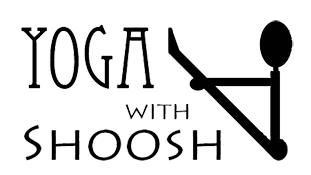I have a classically autistic brother, non-verbal, hand-twirling, but fascinating. From a young age, I have been spending time with children and adults who were autistic, autistic-like, or just different. In the late 1970’s, after I had been teaching yoga for many years, I became a special education teacher and began to share yoga with my young, emotionally disturbed students. This was an interesting, yet comfortable union of my skills, and I have been teaching yoga to students of all ages with various special needs ever since.
My young, emotionally disturbed students were often stressed, tense and living in crowded homes with too many people. I taught them about personal space, stillness and relaxation. We also worked on some challenging balance and strengthening poses. They loved it. I gave them tools to help cope with their often disturbing worlds and they remembered me years later as the “yoga lady”.
One of the aspects in yoga that I find so positive is that it is individualized. There can be a variation or alternative to most every pose. Therefore, this is what makes yoga appealing as a therapeutic form of bodywork. As a teacher, I personally enjoy empowering students to work on their own bodies by providing tools they can use themselves, as opposed to passive treatment styles used by other types of therapists.
Currently I work with people who have multiple sclerosis (MS), arthritis, fibromyalgia, cancer, and other health challenges that can come with age. Although symptoms may vary, the basic needs of each person are similar. Also, it is important that teachers do their homework to learn the symptoms, limitations and potential difficulties for each student. Here are two basic pointers:
• It is important to have access to props. For some, this means that they buy yoga blocks and straps and bolsters. However, there are many people who either can’t or won’t get these items, so I adapt and use furniture, walls, terrycloth bathrobe belts, and so on.
• Everyone needs to relax, but for those with extra stressful conditions, such as MS, fibromyalgia, or Cancer, relaxation needs to be emphasized and made important as therapy on its own. It is sometimes difficult in our busy culture to make stopping an acceptable practice! Often a slower, more subtle practice is not considered challenging or “sweaty” enough. But it IS what is needed!
Life is not a contest, and neither is yoga. What some consider “advanced” poses (where extreme flexibility and strength are required) is often actually a form of competition. I like to tell my students that knowing what your body needs, especially if you have a disability or limiting condition, is much more difficult and advanced than following your competitive urge to keep up with or out-perform the yoga student next to you (or the one in your head!). The subtleties of internal bodywork, the intensity of awareness and what can be learned from this type of focus is boundless. In my experience as a yoga teacher, I have come to believe that most students have special needs, some are just more obvious than others.
If you have any question or comments, feel free to email me at shsh@yogawithshoosh.com.

